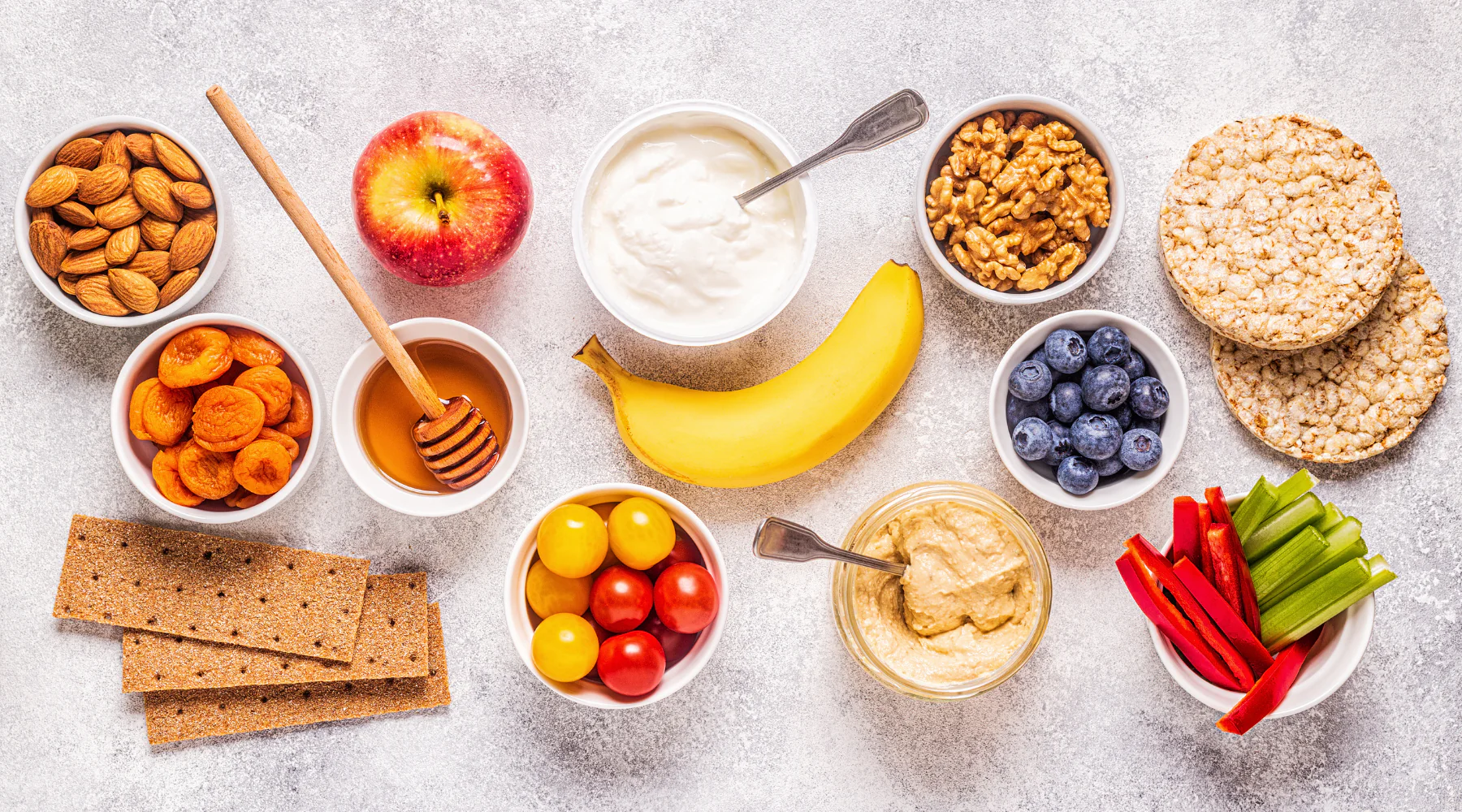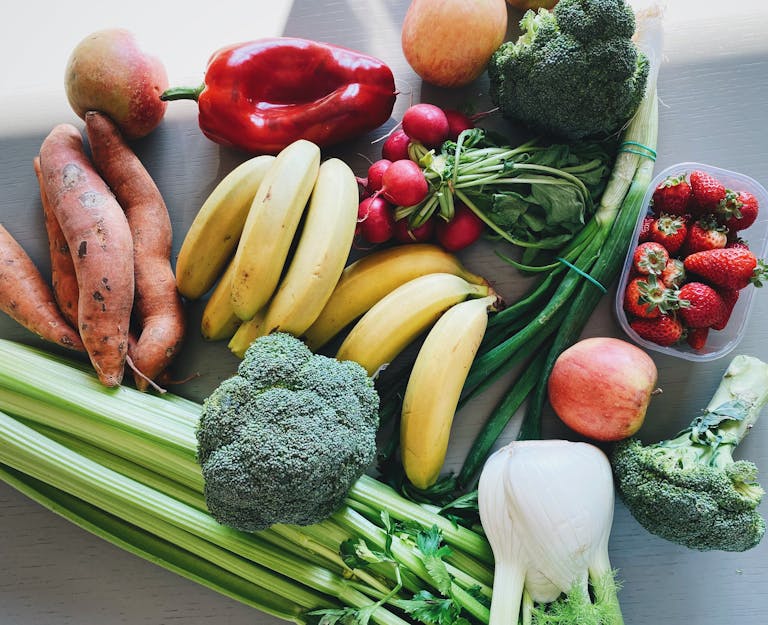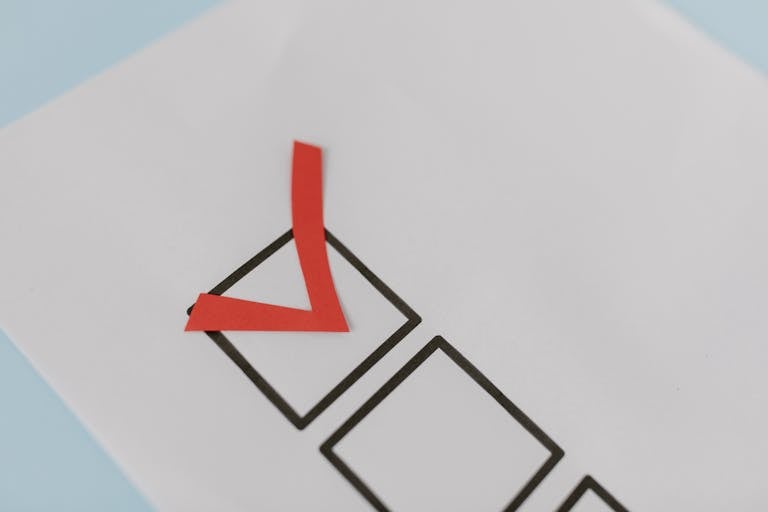
Can snacking be part of a healthy diet?
Snacking often carries a negative stigma because many people associate it with low nutrient, ultra-processed foods. While mindless grazing on chips and cookies can lead to weight gain and derail your health goals, intentional snacking can provide essential nutrients, stabilize energy levels, and support overall well-being.
I encourage people to see snacking as an opportunity to fuel their bodies with delicious, nutrient-dense foods. The right snack, eaten at the right time of the day, can help maintain stable blood sugar levels and improve mood, energy, ability to focus, and sleep quality.
To help you snack smarter, I’m breaking down why snacking can be beneficial and sharing practical tips to make it a healthy habit. We’ll explore the benefits of snacking, the perfect recipe for a healthy snack, and strategies to snack wisely every time.
Why Snacking Can Be Beneficial
Nutrient-dense snacks, consumed at the right times, are key to helping you meet your daily energy and nutrient needs and supporting your overall health. These snacks sustain energy levels, preventing the crashes that often leave you feeling sluggish and unfocused during busy days. Whole foods rich in protein, healthy fats, and fiber stabilize blood sugar and support hormonal balance, keeping you feeling your best. Additionally, satisfying snacks help curb cravings, reducing the chances of overindulging in less nutritious options later in the day. Snacks packed with essential vitamins and minerals not only meet your nutrient requirements but also boost mood and brain health, helping you stay positive, alert, and productive. With the right choices, snacking becomes a valuable tool for maintaining overall health and well-being.
The Perfect Recipe for a Healthy Snack
Think of a healthy snack as a well-crafted mini-meal with the right ingredients to fuel your day. Like baking the perfect cake (a wholesome cake, of course), a great snack requires balance, quality ingredients, and the right portion size. The formula for a healthy snack includes three essential elements: proportions, nutrient density, and proper portions. Let’s break it down:
Proportions: The Snacking Trifecta
Every healthy snack should strike a balance between complex carbohydrates, protein, and healthy fats. This trio works together to keep you satisfied and energized. Focus on complex carbohydrates from vegetables, fruit, or whole grains, pair them with a source of protein, and round out your snack with a touch of healthy fat. For example, apple slices with almond butter or whole-grain crackers with turkey slices tick all the boxes for a balanced snack that fuels your body and keeps hunger at bay.
Nutrient Density: Quality Over Quantity
Healthy snacks should center on whole, nutrient-dense foods with minimal processing. Look for options that are rich in fiber (at least 3 grams), protein (at least 5 grams), and a touch of healthy fat, while keeping added sugars to a minimum. Think of snacks like plain Greek yogurt with berries, raw veggies with guacamole, or a handful of nuts paired with a piece of fruit. These choices not only satisfy hunger but also provide essential macronutrients and micronutrients to support your overall health.
Portion Control: Snack-Sized, Not Supersized
A snack should be just that—a snack, not a full meal. As a general guide, choose snacks that are between 100-200 calories, while adjusting based on your unique energy needs, activity level, and daily routine. Some people may not need snacks at all, while others thrive with one or even two snacks a day to keep their energy steady and hunger in check. The key is to avoid mindless grazing and focus on intentional portions that provide enough energy to keep you going without overindulging.
Strategies to Snack Wisely
Snacking can be a powerful tool for maintaining energy, managing hunger, and meeting your nutritional needs—if done the right way. The key is to snack mindfully and intentionally, starting with understanding why you’re reaching for a snack in the first place. Are you truly hungry, or are you bored, stressed, or simply craving something sweet? By identifying your reason for snacking, you can make more intentional choices that support your health goals. Combined with selecting the right foods, paying attention to timing, and controlling portions, a little strategy goes a long way in turning snacking into a healthy habit. Here are some practical tips to help you snack smarter and make the most of your mini-meals.
- Don’t Skip Meals: Skipping meals often leads to intense hunger later in the day, making it more likely you’ll overeat or reach for less nutritious snacks. Regular, balanced meals help stabilize energy levels and reduce the urge to snack excessively.
- Plan Ahead: Keep healthy snacks on hand to avoid being tempted by unhealthy options. Stock your kitchen, backpack, purse, or desk with nutritious choices like nuts, fruit, veggies, hummus, yogurt, or whole-grain crackers. A little preparation can save you from impulsive decisions.
- Zero in on Hunger: Before grabbing a snack, pause to assess your hunger. Are you physically hungry (e.g., a hollow stomach or headache), or are you bored, stressed, or tired? Rate your hunger on a scale and ensure it’s not thirst in disguise—drink a glass of water and wait 10–15 minutes. If you’re still hungry, enjoy a healthy snack.
- Snack Mindfully: Avoid multitasking while snacking. Eating while watching TV, scrolling your phone, or working can lead to overeating because you’re not paying attention to your portions or satisfaction. Take a few moments to enjoy your snack fully and focus on its taste and texture.
- Keep It Balanced: For a snack that provides lasting energy, aim for a balance of protein, fiber, and healthy fats. These nutrients work together to keep you full and energized. For example, pair berries with cottage cheese or veggies with a hard-boiled egg.
- Eat from a Plate, Not a Package: Avoid eating straight from a box or bag, as it’s easy to lose track of how much you’ve consumed. Portion your snack onto a plate or bowl to control your servings and keep overeating in check.
Some of My Favorite Snack Ideas
1. Greek Yogurt Parfait Jars
- Why it’s great: High in protein and probiotics to support gut health and muscle maintenance.
- How to make it portable: Layer plain Greek yogurt with fresh berries, a drizzle of honey, and a sprinkle of nuts or seeds in a mason jar. Keep it cool with a small ice pack.
2. Trail Mix with a Twist
- Why it’s great: A mix of healthy fats, protein, and fiber to provide sustained energy and stabilize blood sugar levels.
- How to make it portable: Combine almonds, walnuts, pumpkin seeds, dried cranberries, and a few dark chocolate chips in a small reusable bag or container.
3. Veggie Sticks with Hummus
- Why it’s great: Packed with fiber and plant-based protein, plus the crunch factor to satisfy cravings.
- How to make it portable: Pre-cut carrots, cucumber, and bell peppers and pack them with a single-serve container of hummus.
4. Mini Egg Muffins
- Why it’s great: High in protein and customizable with nutrient-dense add-ins like spinach, mushrooms, or feta cheese.
- How to make it portable: Bake in a muffin tin, cool, and store in an airtight container. They’re perfect cold or reheated.
5. Nut Butter and Apple Slices
- Why it’s great: Combines natural sugars with protein, fiber, and healthy fats to keep you satisfied.
- How to make it portable: Slice an apple and pack it with an individual nut butter packet for easy dipping.
6. Chia Pudding Cups
- Why it’s great: High in omega-3 fatty acids, fiber, and protein—great for hormone balance and sustained energy.
- How to make it portable: Mix chia seeds with unsweetened almond milk, a dash of vanilla, and a touch of honey. Let it sit overnight in small jars and top with fruit before heading out.
7. Roasted Chickpeas
- Why it’s great: Crunchy, savory, and loaded with fiber and protein.
- How to make it portable: Roast chickpeas with olive oil and spices like paprika or cumin, then store in a resealable bag or jar.
8. Protein-Packed Smoothies
- Why it’s great: A quick and easy way to pack in vitamins, minerals, and protein.
- How to make it portable: Blend your favorite ingredients like spinach, frozen berries, protein powder, and almond milk, then pour into an insulated tumbler.
9. Cheese and Whole-Grain Crackers
- Why it’s great: Combines protein and fiber to curb hunger and support blood sugar balance.
- How to make it portable: Pair individual cheese sticks or cubes with a handful of whole-grain crackers in a container.
10. Energy Balls
- Why it’s great: A no-bake, nutrient-packed snack that combines protein, healthy fats, and a touch of sweetness.
- How to make it portable: Mix oats, nut butter, flaxseeds, and a bit of honey or maple syrup. Roll into balls and store in an airtight container.
Ready to Reclaim Your Health Through Personalized Nutrition?
You don’t have to navigate perimenopause and menopause alone. By working with Daria, you’ll gain the tools and confidence to cut through the confusion, manage your symptoms, optimize your health, and build sustainable habits for a longer, healthier life. Explore services or book your free discovery call now:



